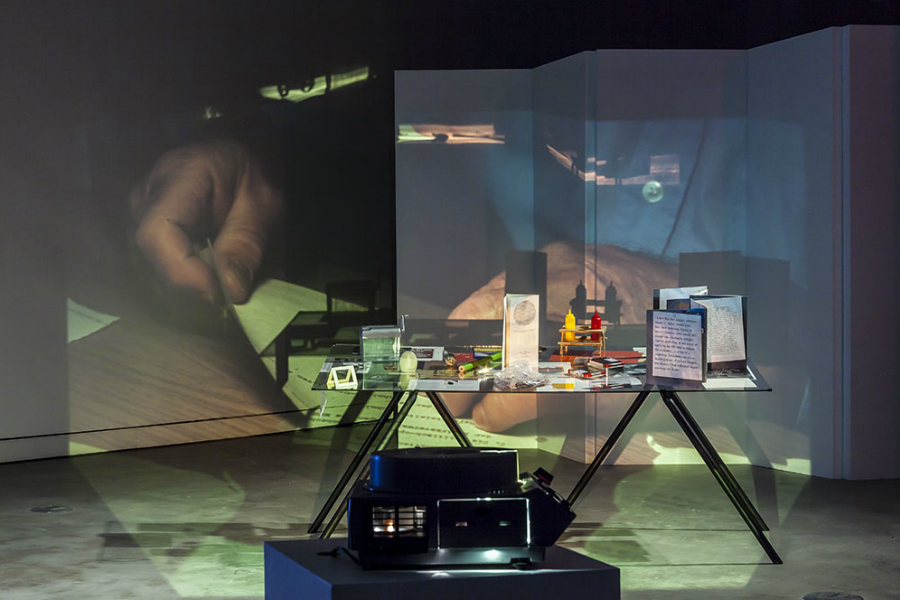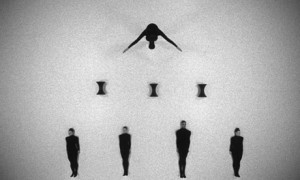Turner Prize 2014 — The Lowdown

Oli Rahman shares his thoughts on the infamous prize and this year’s relatively unknown artists…
The Turner Prize has launched the careers of some of the biggest heavyweights in the British Art Scene over the past 30 years.
That’s not to say that the award named after landscape painter JMW Turner and previously held at Tate Liverpool, Baltic in Newcastle and last year in Derry-Londonderry, doesn’t have its critics. Some have grumbled that the prize feeds the art market’s cynical commercialisation of young talent, or that judges opt for the safest choice.
But regardless it has definitely got people talking about art, whether it is a former Culture Minister blasting the exhibits as “cold, mechanical bullshit” or Grayson Perry’s priceless reaction to winning the award: “It’s about time a transvestite potter won”.
Turner Prize winners include the painter and printmaker Howard Hodgkins, the UK’s most famous shark-pickler Damien Hirst, and video artist and director Steve McQueen, who went on to wow critics with his films Shame and 12 Years a Slave.
There’s usually something for everybody, and the panels are usually good at spotting fresh talent.
When I went to the 2006 show, the first artist, Mark Titchner, was interested in “belief systems” and had made a sort of supercomputer out of keyboards and old religious symbols. As a teenager I thought it was a really original idea. Now it sounds like a rip-off of a concept from a Terry Gilliam film.
Then there was Rebecca Warren, who made parody sculptures of famous works of art out of modelling clay, copper and reclaimed objects. I liked the idea, but the sculptures themselves didn’t do anything for me, they just looked a bit naff.

I had read about the Chapman Brothers, Hirst, Emin, the maverick breed of YBAs who had a punk mentality. This show didn’t quite live up to that reputation.
The 2006 winner, Tomma Abts, was a German abstract painter whose work was so dull and unmemorable that I’ve seen it various times and still can’t recall a single detail. It definitely seemed like a safe choice.
But Phil Collins (not that one), was interesting. The Runcorn-born documentary artist and prankster had moved his production company Shady Lane Productions into the gallery and filmed a series of interviews with people whose lives had been ruined by reality television. I really liked the idea, and was idiotically confident that he was going to win.
As Tate’s competition gets into full swing, TDN can reveal that this year’s offering, back on display at Tate Britain in Pimlico, is heavy on the video and craft. It’s packed full of interesting yet releatively unknown artists from the new generation of YBAs, and will certainly divide opinion (the Guardian’s Adrian Searle has already described it as “a more dour list than usual, with unfamiliar names and few concessions to visual pleasure” — ouch). One of the most astonishing aspects of the selection is that three out of the four are graduates from the Glasgow School of Art ; which begs the question, is this the UK’s best art school?
One is Glasgow-based Ciara Phillips creates screenprints, textiles, photographs and wall paintings. The Canadian-born graduate of GSoA has in the past exhibited in Hamburg, Dusseldorf, and the Glasgow International Festival of Visual Art. She has turned galleries into workshops and does collaborative work. Her bio says that she has taken inspiration from Corita Kent, an artist who parodied 60s advertising.
James Richards — Searle’s “unknown quantity” — has contributed video to a show at the 55th Venice Biennale called The Encyclopaedic Palace and has also exhibited work at the Lyon Biennial, and in RODEO in Istanbul. His work is mostly video and installation art, and for his video Rosebud, which is just under 13 minutes long, he manipulates found VHS footage and overlays sound effects to create what he describes as a sort of collage. The short was first shown at the Artists Space in New York.
A Dublin-born, GSoA graduate, Duncan Campbell is another video artist and has made work that has appeared in the Scotland and Venice Biennale. His piece Make it new John (2009), about the DeLorean car, its creator John DeLorean and the workers of the Belfast-based car plant who built it, was recently shown at FACT, Liverpool. The piece that got him into the shortlist is It for Others, a mish-mash of archive footage and his own footage edited to form a new narrative, including a new dance work by choreographer Michael Clark. His past exhibitions have included the Carnegie Museum of Art, Pittsburgh (2012), Belfast Exposed (2011), and the Artists Space in New York (2010).
Another Glasgow School of Art graduate and unquestionably my favourite of this year’s batch is Tris Vonna-Michell (main image). The London Evening Standard described the Southend-on-Sea-born artist (who along with James Richards have worked closely with the area’s Focal Point Gallery) as being like an “Essex wideboy”. His videos are fast paced spoken performances and recordings featuring tales of his family’s history that have found him fame on Youtube. He exhibited a video and image piece called Postscript I at Image Papillon in Luxembourg. His entry is called OU: Finding Chopin 2012, and was a performance piece at the Roskilde Museum of Contemporary Art in 2012.
Runners up still walk home with £5K worth of prize money, so there are no real losers. TDN’s money is on Tris, but previous experience tells us that this almost certainly means that someone else will win.
Oli Rahman
Turner Prize 2014 will open at Tate Britain from 30 September 2014 – 4 January 2015, £11/£9.50 concs
The winner will be announced at an awards ceremony, broadcast live on Channel 4, Monday 1 December 2014
Images – Tris Vonna-Michell – image courtesy the artist and CentreVox.ca; centre, Duncan Campbell, still from It for Others (2013)





